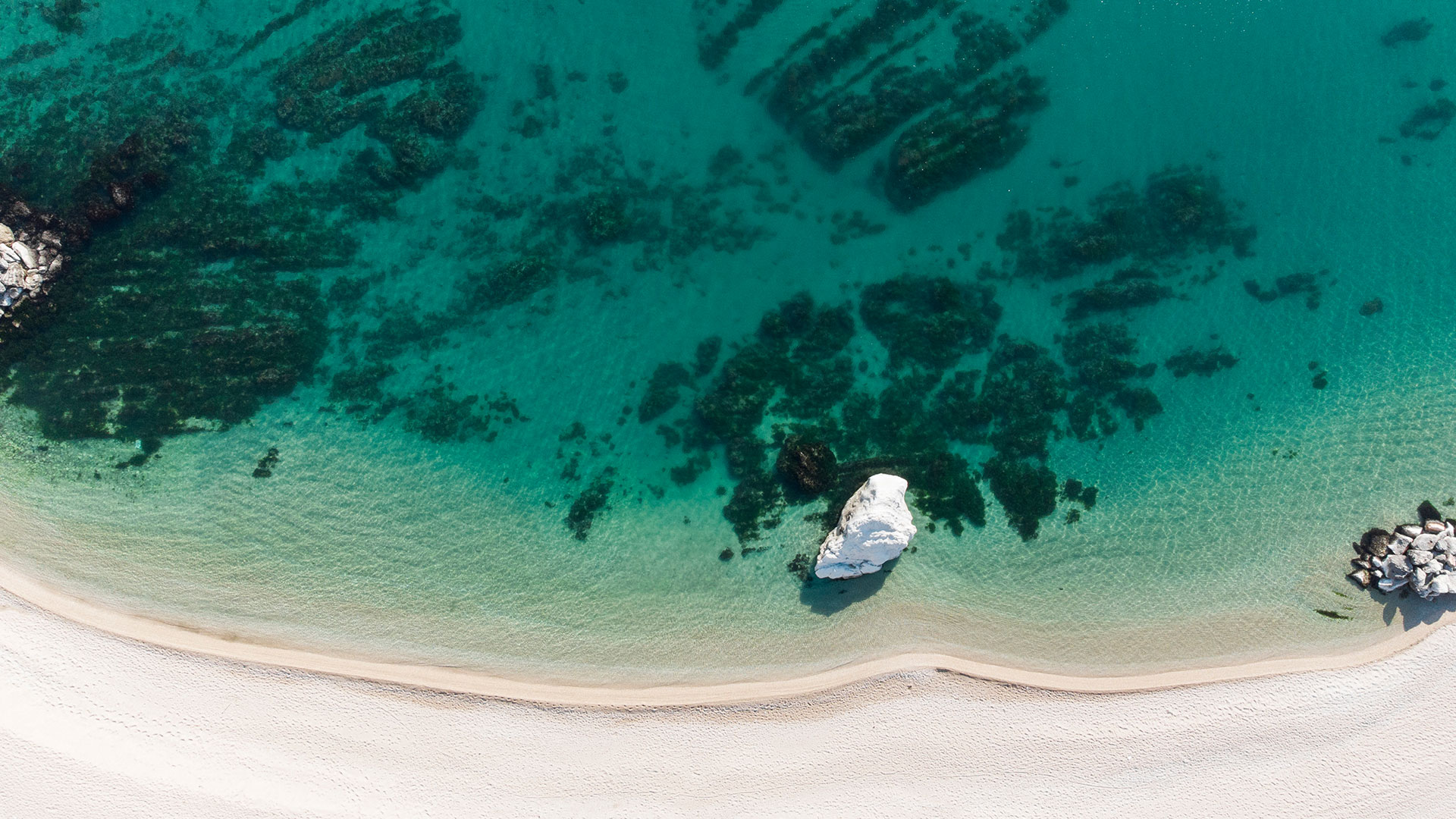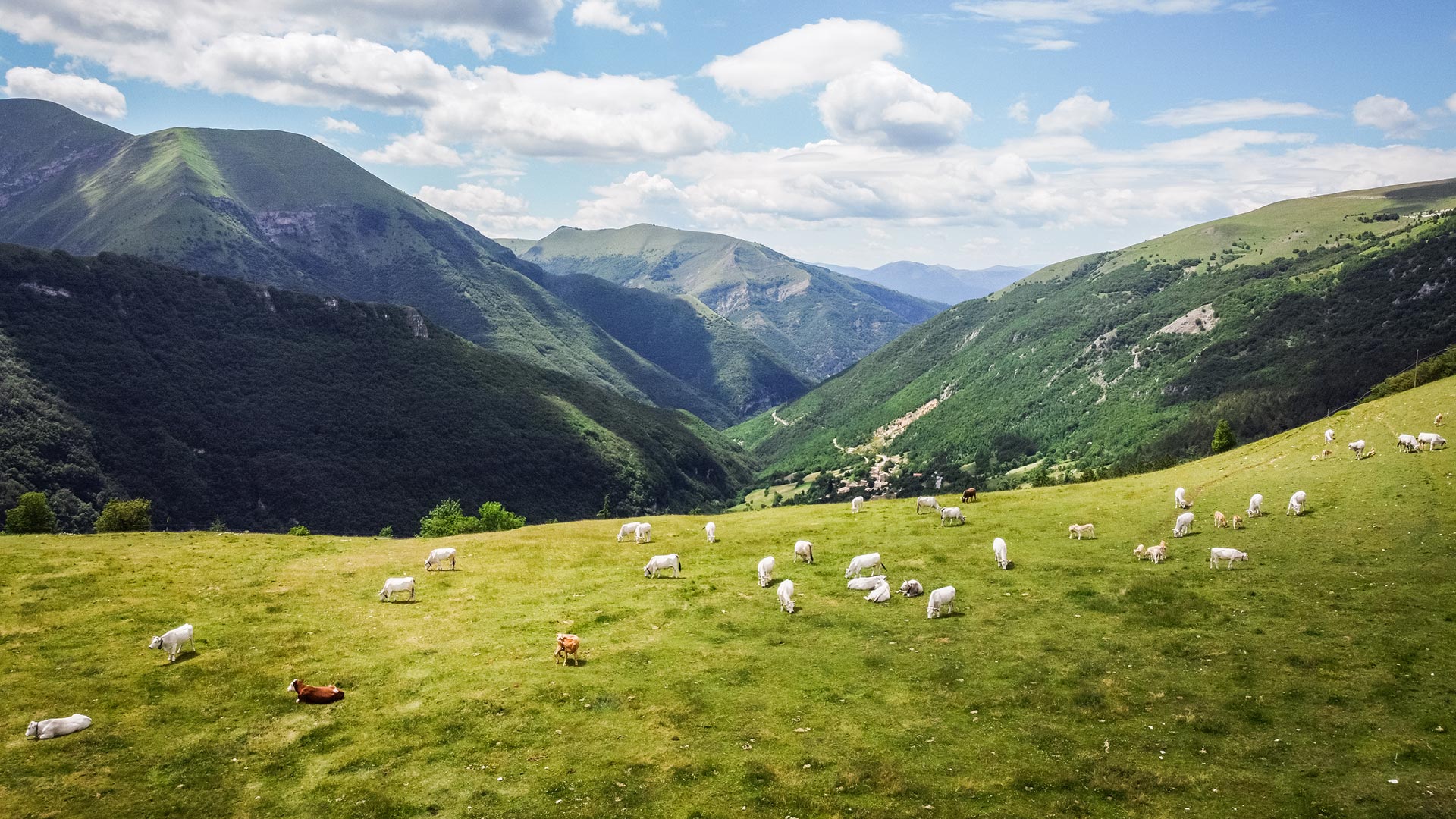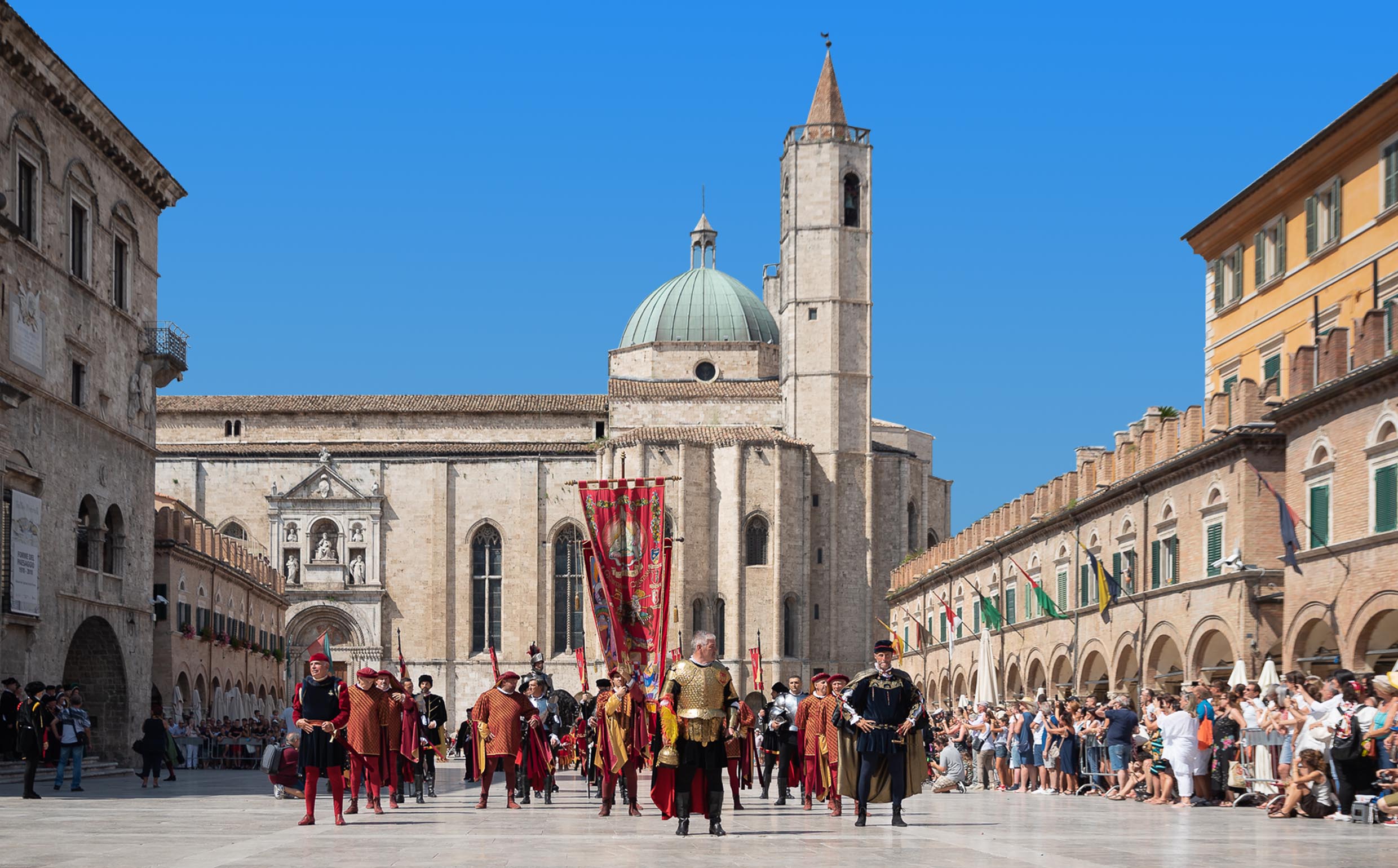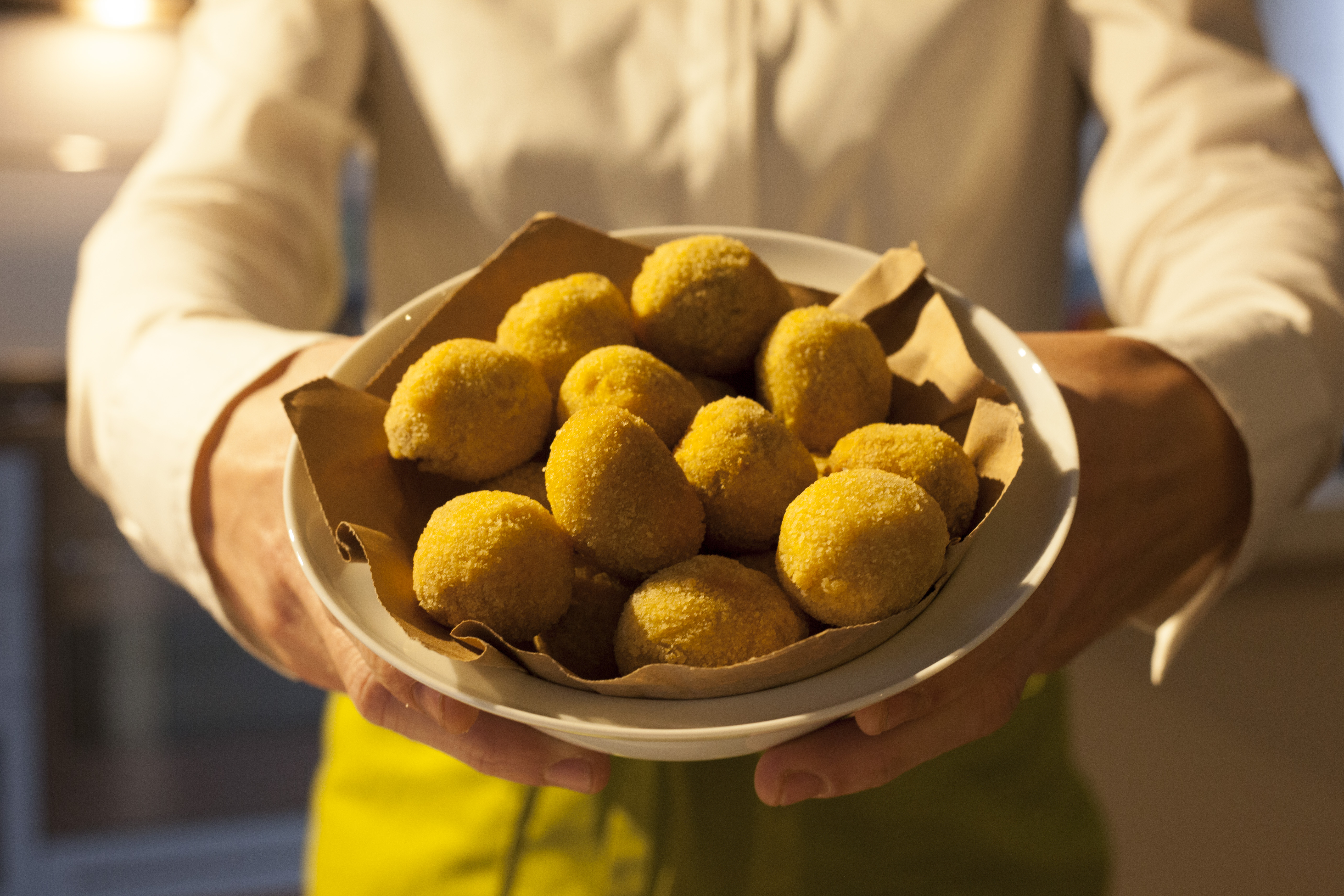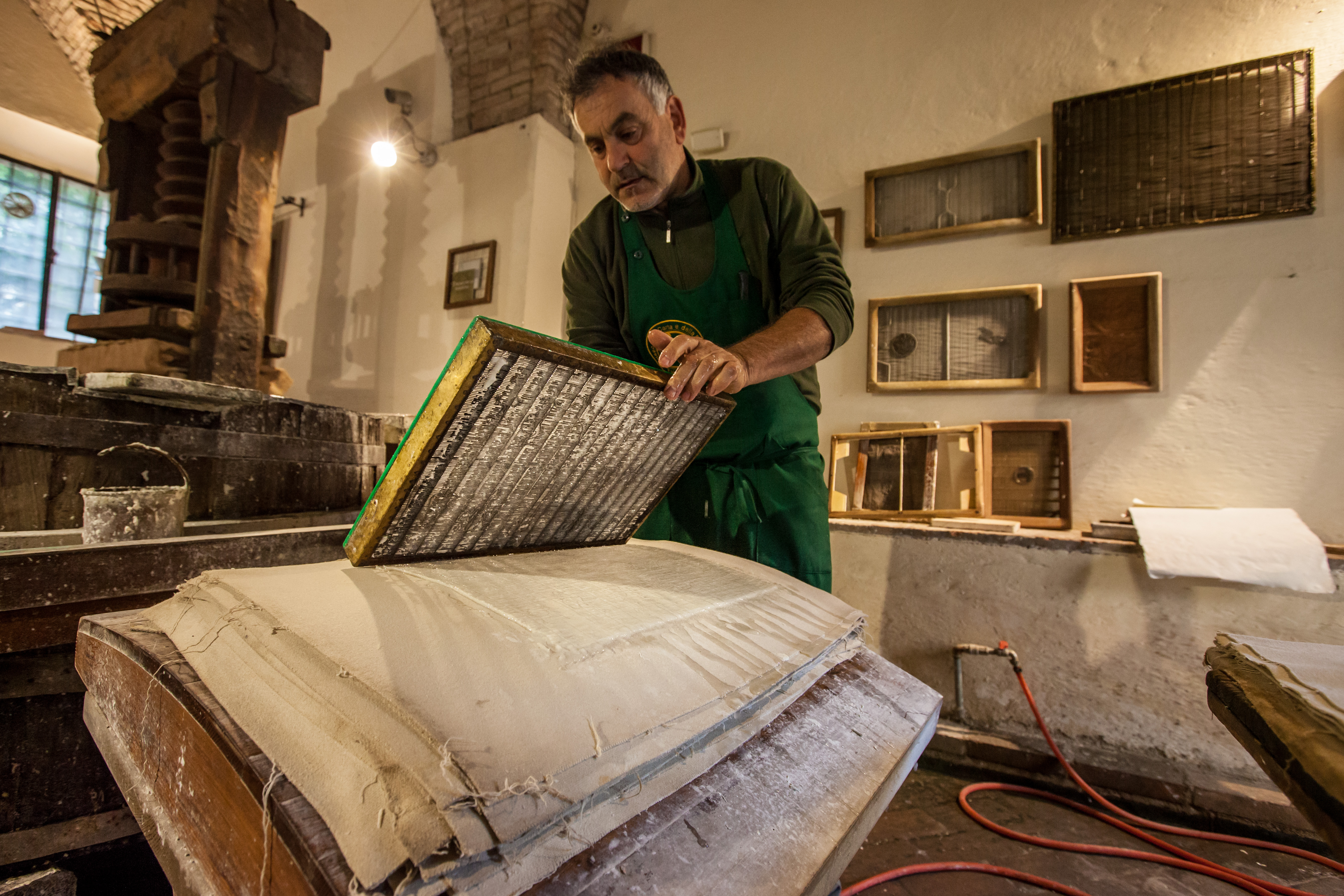Fortresses and castles - Marche Tourism
The cultural heritage
In the Marche – whose original medieval word means bordering area – the distance from the centre of imperial power favoured the development of self-governing communes that subsequently, in the 14th and 15th centuries, became independent states ruled by families that were continuously in conflict. These origins explain why there are so many fortresses and castles in the area, where there was a lively cultural milieu conducive to the experimentation of the leading military architects of the day. In the area corresponding to the present-day province of Pesaro and Urbino, the Malatesta were the first to take an interest in the new defensive schemes, availing themselves of the suggestions of Filippo Brunelleschi and the experience of Matteo Nuti for the fortress of Fano. Their example was followed by the Sforza in Gradara and Pesaro (the Rocca Costanza, built by Luciano Laurana). The Montefeltro, on the other hand, employed the remarkable talents of Francesco di Giorgio Martini for their defensive works – the fortresses of Sassocorvaro, Monte Cergnone, Fossombrone, Cagli, and Frontone – and their residences, the ducal palaces in Urbino and Urbania. The Della Rovere left their mark on the fortress of Mondavio, the Ducal Palace of Pesaro, and the magnificent Villa Imperiale in Pesaro, rebuilt and extended by Girolamo Genga. Further south, Senigallia, where there are a fortress and ducal palace built by the Della Rovere, is the gateway to the fortresses and castles of the province of Ancona: the imposing fortress of Offagna recalls the battles between Ancona and the nearby town of Osimo; in Falconara, it is possible to visit the Rocca Priora, with its portal designed by Luigi Vanvitelli, and the castle in the high town. Inland, Corinaldo, subjected first to the Malatesta and then the Papal State, dominates the valleys of the rivers Cesano and Misa with its external walls intact. Further up the Misa valley, Arcevia and its castles exude a medieval atmosphere. In the next valley going southwards are Jesi, with its castles of Verdicchio, and Fabriano, surrounded by its forts. Some of the most fascinating castles in the region are close to each other in the province of Macerata: the city was surrounded by an imposing series of castles including in Camerino the Rocca d’Aiello and the Rocca Varano; in Castelraimondo the Castello di Lanciano; in Caldarola the Castello Pallotta and the Palazzo dei Cardinali (town hall), in Tolentino the Castello della Rancia and in Urbisaglia the massive fortress. In the province of Ascoli Piceno – on or near the Via Salaria – are Arquata del Tronto with its 13th-century fortress dominating the valley and the old Roman road, on the southern slopes of the Monti Sibillini; near Acquasanta Terme the Castel di Luco with its unusual circular plan, Ascoli Piceno with the imposing Forte Malatesta, and the Castello di Acquaviva Picena, rebuilt in the 15th century by Baccio Pontelli.
-
Art in historical setting
Many of the castles and palaces in the Marche host events and house exhibitions or permanent museums. Cagli’s Torrione contains a Centro di scultura contemporanea (contemporary art works by E. Mattiacci, J. Kounellis, H. Nagasawa etc.), while the fortress of Sassocorvaro houses L’ Arca dell’Art e, a museum commemorating the rescuing of thousands of works of art during the Second World War. The fortress in Gradara boasts Renaissance paintings, while its counterpart in Mondavio contains a Museo di rievocazione storica and the Armeria. The Ducal Palace in Urbino houses the Galleria Nazionale delle Marche and in Piobbico there is a Museo geo-paleontologico, naturalistico, antropico e ornitologico with a permanent exhibition dedicated to the costumes and jewels of a noble house in Palazzo Brancaleoni. The fortress in Senigallia has a permanent exhibition on the Della Rovere family, while Offagna’s fortress hosts a Museo delle armi antiche and stages a medieval festival in July. The Castello della Rancia in Tolentino houses the Museo civico archeologico dedicated to Aristide Gentiloni Silverj and temporary exhibitions. The Palio del Duca is held in the fortress of Acquaviva Picena, which also has a museum of ancient weapons, as does the fortress of Urbisaglia.
-
Passion in Gradara
Gradara is a well-preserved medieval fortification. It combines the past with the present thanks to the presence of major contemporary exhibitions. The town – the medieval capital – is one of Italy’s “Most Beautiful Districts” and has been awarded the Bandiera Arancione (Orange Flag). An ideal place to celebrate Valentine’s Day, it remains shrouded in the mystery of the love between Paolo and Francesca that Dante Alighieri recalls in his Inferno.




